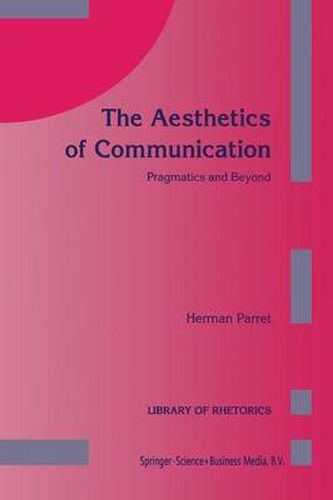Readings Newsletter
Become a Readings Member to make your shopping experience even easier.
Sign in or sign up for free!
You’re not far away from qualifying for FREE standard shipping within Australia
You’ve qualified for FREE standard shipping within Australia
The cart is loading…






This title is printed to order. This book may have been self-published. If so, we cannot guarantee the quality of the content. In the main most books will have gone through the editing process however some may not. We therefore suggest that you be aware of this before ordering this book. If in doubt check either the author or publisher’s details as we are unable to accept any returns unless they are faulty. Please contact us if you have any questions.
AESTHETICIZING PRAGMATICS The Gamut of Pragmatics Pragmatics emerged among the sciences of language at the end of the 1960’s in reaction to certain totalizing models in linguistics: structuralism (primarily in Europe) and generative grammar (initially in the United States). Certain disciples of Chomsky became dissatisfied with autono mous syntax and later with generative semantics: they decided to break away from their mentor. Whereas Chomsky continued to talk a lot about very little, they defied him by speaking very suggestively about an exces sively broad range of phenomena. Pragmatics -which Bar-Hillel consid ered as a ‘wastebasket discipline’ in the fifties - nevertheless gained respectability. The history of pragmatics spans, of course, much more than three decades. The Stoic conception of language, in the shadow of the great Greek tradition and therefore intensely subversive, had in fact a pragmatic aim. The term pragmatisch appears in Kant: it expresses a relation with a human goal, this goal being only determinable within a community. This characterization naturally inspires the pragmaticism of l the Neo-Kantian Charles Sanders Peirce . It is this Kant-Peirce lineage that led to Morris and Carnap’s rather bland conceptions of pragmatics, after the heavy losses incurred by positivism and behaviorism. In any case, despite the constant presence of a pragmatic approach in the history of thought, this reassessment of pragmatics (against the triumphs proclaimed by structuralism and generativism) was experienced as a Significant break through. A whole range of pragmatics came to the attention of linguists.
$9.00 standard shipping within Australia
FREE standard shipping within Australia for orders over $100.00
Express & International shipping calculated at checkout
This title is printed to order. This book may have been self-published. If so, we cannot guarantee the quality of the content. In the main most books will have gone through the editing process however some may not. We therefore suggest that you be aware of this before ordering this book. If in doubt check either the author or publisher’s details as we are unable to accept any returns unless they are faulty. Please contact us if you have any questions.
AESTHETICIZING PRAGMATICS The Gamut of Pragmatics Pragmatics emerged among the sciences of language at the end of the 1960’s in reaction to certain totalizing models in linguistics: structuralism (primarily in Europe) and generative grammar (initially in the United States). Certain disciples of Chomsky became dissatisfied with autono mous syntax and later with generative semantics: they decided to break away from their mentor. Whereas Chomsky continued to talk a lot about very little, they defied him by speaking very suggestively about an exces sively broad range of phenomena. Pragmatics -which Bar-Hillel consid ered as a ‘wastebasket discipline’ in the fifties - nevertheless gained respectability. The history of pragmatics spans, of course, much more than three decades. The Stoic conception of language, in the shadow of the great Greek tradition and therefore intensely subversive, had in fact a pragmatic aim. The term pragmatisch appears in Kant: it expresses a relation with a human goal, this goal being only determinable within a community. This characterization naturally inspires the pragmaticism of l the Neo-Kantian Charles Sanders Peirce . It is this Kant-Peirce lineage that led to Morris and Carnap’s rather bland conceptions of pragmatics, after the heavy losses incurred by positivism and behaviorism. In any case, despite the constant presence of a pragmatic approach in the history of thought, this reassessment of pragmatics (against the triumphs proclaimed by structuralism and generativism) was experienced as a Significant break through. A whole range of pragmatics came to the attention of linguists.